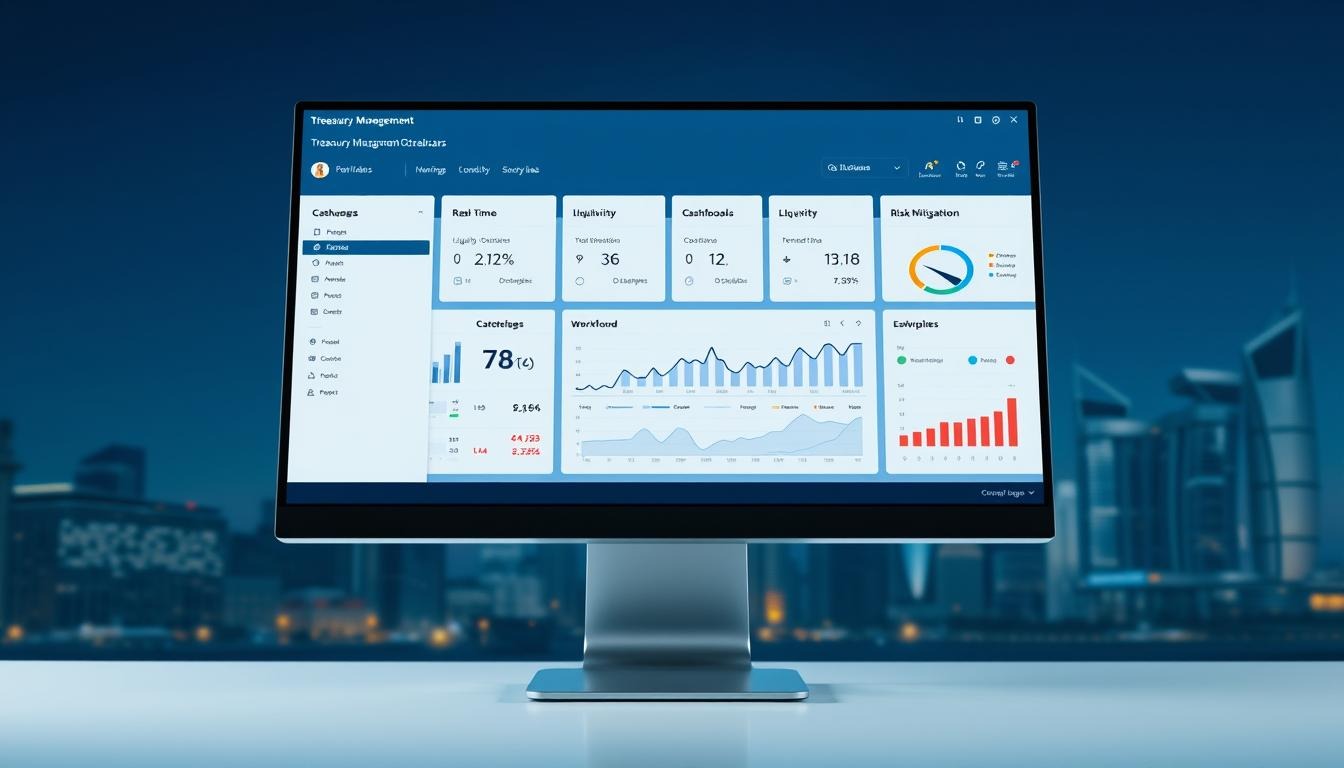Automated Reconciliation Software for Faster Month-End Closing
Closing the books at the end of the month can be one of the most stressful times for finance teams. Endless spreadsheets, manual matching, late nights, and constant double-checking – it’s all too familiar. But what if you could speed up this process without sacrificing accuracy? That’s where automated reconciliation software comes in.

In today’s fast-paced business world, automation is no longer optional; it’s essential. Automated reconciliation tools simplify and accelerate the month-end close, giving teams the time and confidence to focus on insights instead of manual work.
In this blog, we’ll explore how automated reconciliation software helps organizations close their books faster, improve financial accuracy, and reduce stress during reporting periods.
What is Automated Reconciliation Software?
Automated reconciliation software is a technology solution designed to match and verify transactions automatically between different financial systems, such as bank statements, general ledgers, ERP systems, and payment gateways.
In simple terms, it compares records from various sources to ensure everything aligns. If there’s a mismatch or missing entry, the system highlights it instantly, saving hours of manual checking.
Traditional reconciliation often requires finance teams to cross-check thousands of records in spreadsheets. But automation removes that burden. With an automated reconciliation system, you can reconcile in minutes instead of hours, with greater accuracy.
Why Month-End Closing is Challenging Without Automation
Month-end closing is one of the most critical financial tasks. It ensures all accounts are accurate, transactions are complete, and financial reports reflect the true picture of the company. However, without automation, this process can be extremely time-consuming and error-prone.
Here are some of the biggest challenges teams face:
- Manual data entry errors – Copy-paste mistakes or mismatched records are common in spreadsheets.
- High transaction volume – Businesses dealing with multiple accounts and platforms struggle to match data efficiently.
- Time pressure – Teams must complete reconciliation before generating financial statements.
- Limited visibility – Manual methods don’t offer real-time insights into financial data.
- Audit risks – Human errors can lead to reporting inaccuracies and compliance issues.
Automation solves these issues by providing an end-to-end reconciliation process that’s faster, smarter, and more transparent.
How Automated Reconciliation Software Speeds Up Month-End Closing
The biggest advantage of automated reconciliation software is speed. But that speed comes from intelligent automation, not cutting corners. Here’s how it transforms the month-end closing process:
1. Automatic Data Import
The software automatically fetches data from multiple sources, such as ERP systems, bank feeds, and payment platforms, saving you from manual uploads. This integration ensures data consistency and eliminates duplication.
2. Instant Transaction Matching
With advanced algorithms, the system compares records automatically. It can match thousands of transactions in seconds, identifying discrepancies in real time. Some tools even use AI to learn matching patterns over time, making reconciliation smarter and faster.
3. Real-Time Alerts and Exception Handling
When mismatches occur, the system flags them instantly. Teams can then review and fix exceptions using clear dashboards, reducing hours of manual checking.
4. Continuous Reconciliation
Unlike traditional month-end-only reconciliation, automated software allows continuous reconciliation throughout the month. This means fewer surprises during closing time.
5. Ready-to-Use Reports
Once reconciliations are done, the system generates accurate reports automatically, saving your team from manual compilation and formatting work.
With these capabilities, month-end closing becomes a smooth, predictable process rather than a stressful race against time.
Key Features of Automated Reconciliation Software
When choosing a reconciliation solution, it’s essential to understand the features that make it effective. The best tools combine automation, intelligence, and ease of use.
Here are the most important features to look for:
1. Multi-Source Integration
Seamlessly connect your software with banks, ERPs, accounting platforms, and payment gateways. This ensures that all financial data flows automatically into one place.
2. AI-Powered Matching
Modern tools use machine learning to identify complex matching patterns across multiple data sets. This reduces exceptions and continuously improves accuracy.
3. Customizable Matching Rules
Businesses have unique reconciliation needs. Flexible rule configuration allows you to tailor the matching logic according to your accounting policies.
4. Exception Management
A clear, centralized dashboard helps your team focus only on unmatched transactions. This minimizes manual effort and ensures nothing slips through the cracks.
5. Audit Trail and Compliance
Automated logs of every action help maintain compliance and transparency during audits.
6. Real-Time Dashboards and Analytics
Access real-time visibility into financial health and reconciliation status across accounts and entities.
7. Security and Data Privacy
Top-tier reconciliation solutions come with enterprise-grade security, encryption, and access controls to protect sensitive financial information.
Benefits of Using Automated Reconciliation Software
The benefits of automation go beyond just faster closing. It fundamentally changes how finance teams operate. Let’s look at the major advantages:
1. Significant Time Savings
Reconciliations that used to take days can now be completed in minutes. Automation speeds up matching, reporting, and exception handling, freeing up your team for higher-value work.
2. Improved Financial Accuracy
Automated matching eliminates human error. Every transaction is verified against multiple data points, ensuring precise and consistent records.
3. Greater Transparency
Real-time dashboards provide clear visibility into the reconciliation process. You can instantly identify bottlenecks or discrepancies.
4. Reduced Month-End Stress
Automation removes repetitive manual work, making closing cycles smoother and less exhausting for finance professionals.
5. Better Compliance and Audit Readiness
With a detailed digital audit trail, your organization stays compliant with financial reporting standards. Auditors can easily trace every adjustment and entry.
6. Scalability
As your business grows, so does your transaction volume. Automated reconciliation software scales effortlessly without increasing manual workload.
7. Cost Efficiency
Though automation requires an initial investment, it quickly pays for itself through saved time, reduced errors, and improved productivity.
Industries Benefiting Most from Reconciliation Automation
While every organization can benefit, certain industries experience even greater gains from automated reconciliation systems due to high transaction volumes and complex financial flows.
These include:
- E-commerce and Marketplaces – Multiple payment gateways and daily transactions make automation essential.
- Banking and Fintech – Financial accuracy and compliance require real-time reconciliations.
- Retail Chains – Managing cash, card, and digital transactions across outlets.
- Gaming and Entertainment – Frequent micro-transactions across platforms.
- Payments and Aggregators – Continuous reconciliation for thousands of accounts.
- Travel and Hospitality – Handling multiple booking systems, currencies, and payments.
For such sectors, automated reconciliation software isn’t just convenient; it’s mission-critical.
How to Implement Automated Reconciliation in Your Organization
Transitioning from manual to automated reconciliation doesn’t have to be overwhelming. Follow these steps for a smooth implementation:
1. Assess Current Reconciliation Processes
Identify pain points such as manual effort, error frequency, or data delays to determine where automation will deliver the most impact.
2. Choose the Right Software
Select a platform that integrates well with your existing ERP or accounting system. Prioritize scalability, ease of use, and strong customer support.
3. Integrate Data Sources
Connect your software with all necessary systems, including banks, payment processors, and ledgers, for a seamless data flow.
4. Define Matching Rules
Work with your finance team to configure customized matching logic and workflows.
5. Train Your Team
Ensure your finance staff understands the new process. Most automated reconciliation tools are intuitive, but training ensures full adoption.
6. Start with a Pilot
Begin by automating one reconciliation process (like bank reconciliation). Once successful, expand across all accounts and entities.
7. Monitor and Optimize
Track performance, handle exceptions, and continuously improve matching rules for optimal efficiency.
Also Read: Integrated Treasury Management System: Streamlining Multi-Bank Connectivity
Choosing the Best Automated Reconciliation Software
When selecting the right reconciliation software for your business, consider the following factors:
- Integration capabilities – Can it connect with your ERP, accounting software, and payment systems?
- User-friendly interface – Is it intuitive enough for your team to use daily?
- Automation depth – Does it offer advanced AI or ML-based matching?
- Scalability – Can it handle increased transaction volumes as your business grows?
- Customer support – Does the vendor provide onboarding and real-time assistance?
- Security – Does it comply with data privacy standards and offer secure access controls?
A great example is Kosh.ai, which automates reconciliation in under 60 seconds by integrating with internal and external systems. It’s designed for industries with high transaction volumes and provides granular matching, real-time analytics, and enterprise-grade security, making month-end closing seamless.
The Future of Automated Reconciliation
As technology evolves, reconciliation will become even smarter. AI-driven tools are already capable of predicting mismatches before they occur, suggesting corrective actions, and learning from historical data to improve accuracy.
In the near future, reconciliation will be fully continuous and autonomous, with finance teams only overseeing exceptions and strategic tasks.
The future of month-end closing is real-time, data-driven, and stress-free, thanks to automation.
Final Thoughts
Manual reconciliation is no longer sustainable in a fast-moving digital world. Automated reconciliation software brings speed, accuracy, and peace of mind to finance teams.
By automating repetitive tasks, organizations can focus on insights that truly matter, improving financial control, reducing risks, and closing books faster than ever before.
If your goal is to eliminate bottlenecks and achieve faster month-end closing, automated reconciliation is the smartest step forward.
Also Read: Top 5 Reconciliation Automation Tools to Boost Accounting Efficiency
FAQs
1. What is automated reconciliation software?
Automated reconciliation software matches financial transactions between systems automatically to ensure accuracy and consistency. It eliminates manual data entry and speeds up financial closing.
2. How does automation improve month-end closing?
Automation streamlines data collection, matching, and reporting, reducing manual effort and enabling faster, error-free closings.
3. Is automated reconciliation suitable for small businesses?
Yes. Small businesses benefit greatly from automation as it saves time, reduces errors, and provides better financial visibility.
4. Can automated reconciliation software integrate with any accounting system?
Most modern solutions integrate easily with popular ERPs and accounting tools such as QuickBooks, Xero, SAP, and Oracle.
5. How secure is automated reconciliation software?
Top vendors use enterprise-grade encryption, access controls, and compliance measures to ensure data privacy and security.
6. What are the key features to look for in reconciliation software?
Look for features like multi-source integration, AI-powered matching, real-time dashboards, customizable rules, and automated reporting.
Contact us now


.webp)
.jpg)






